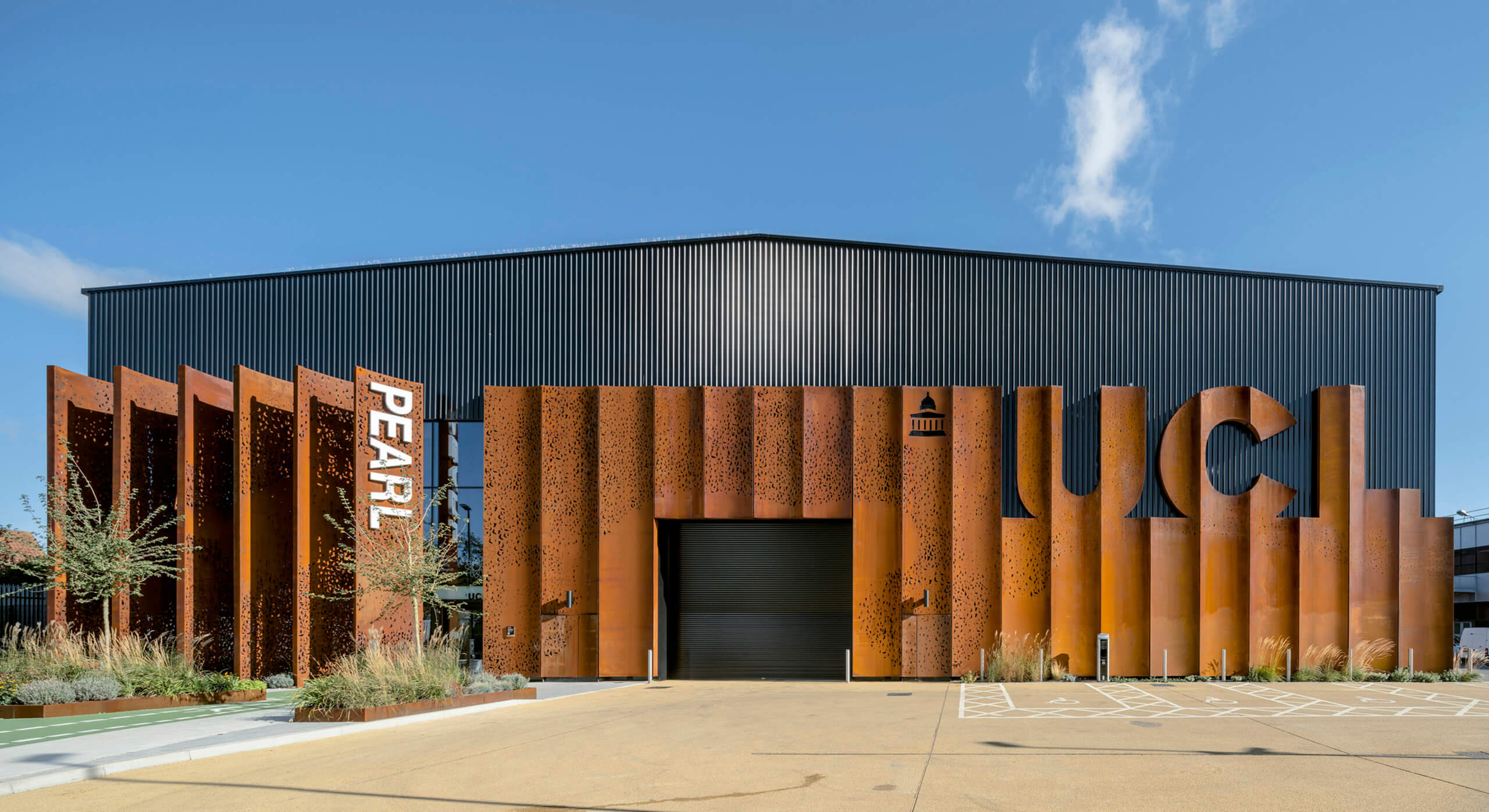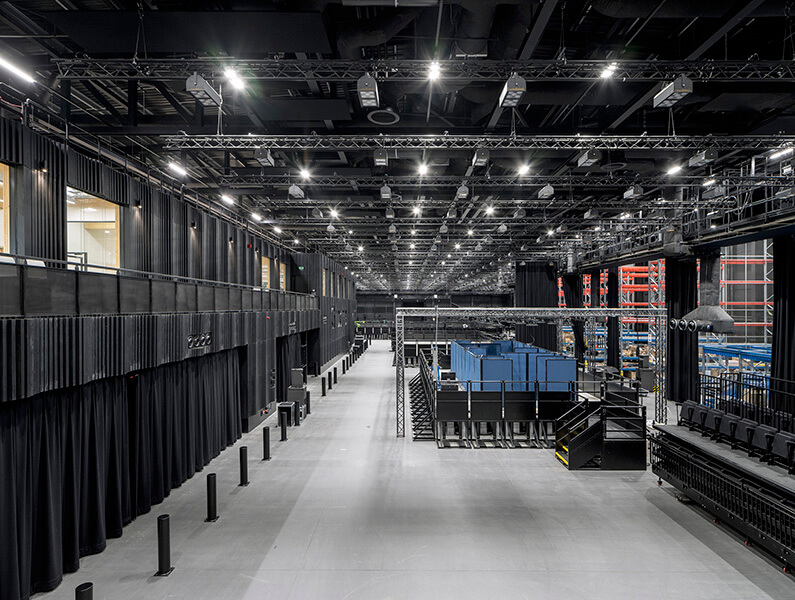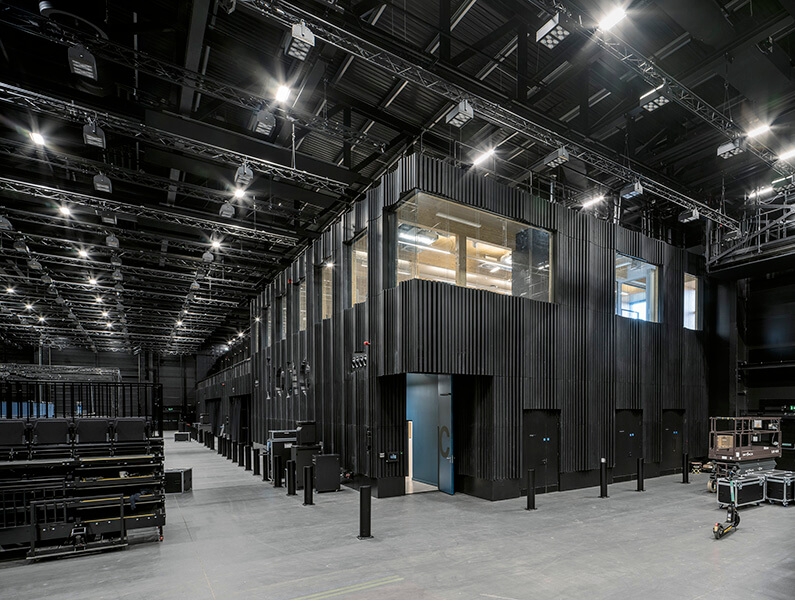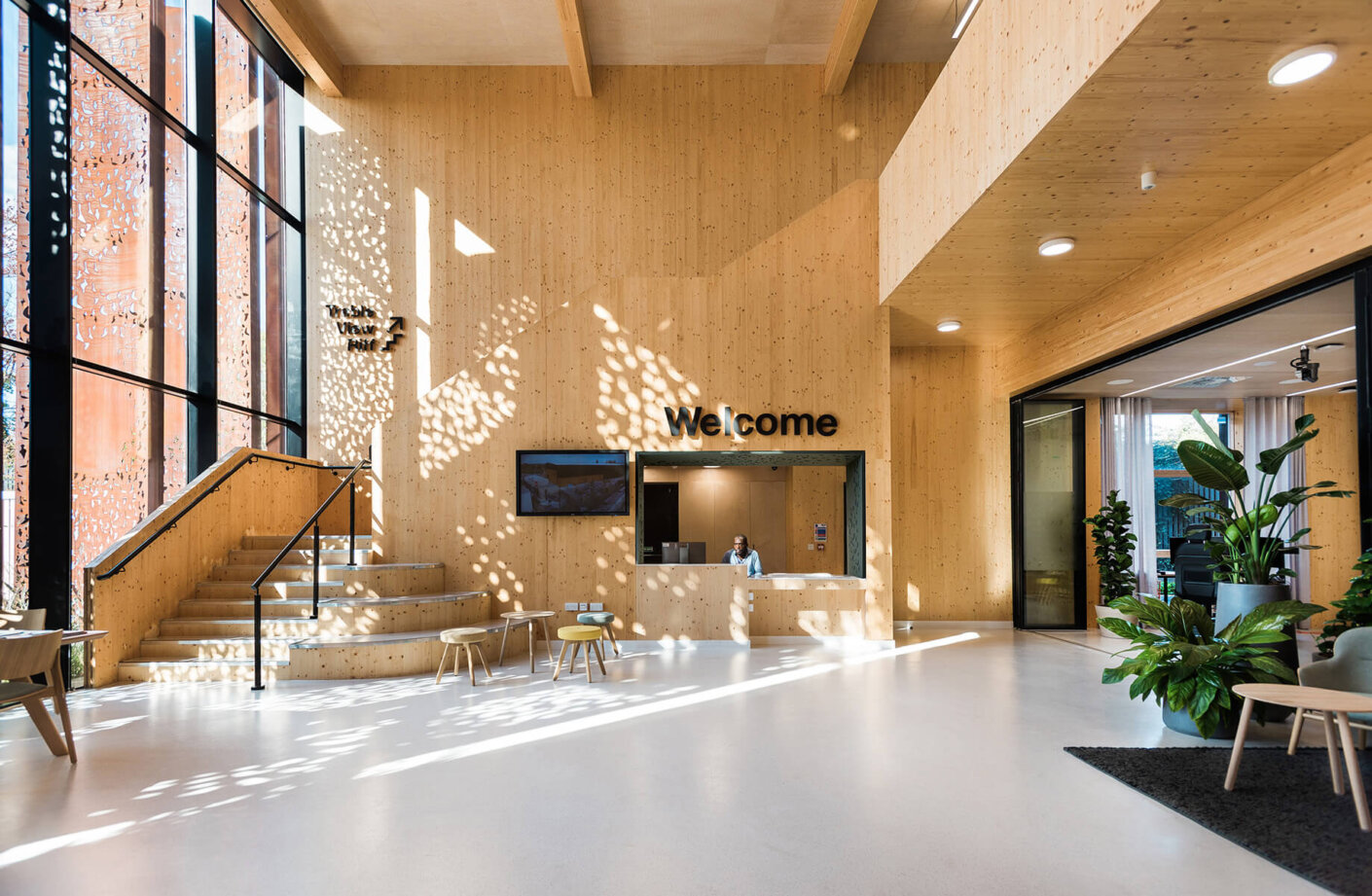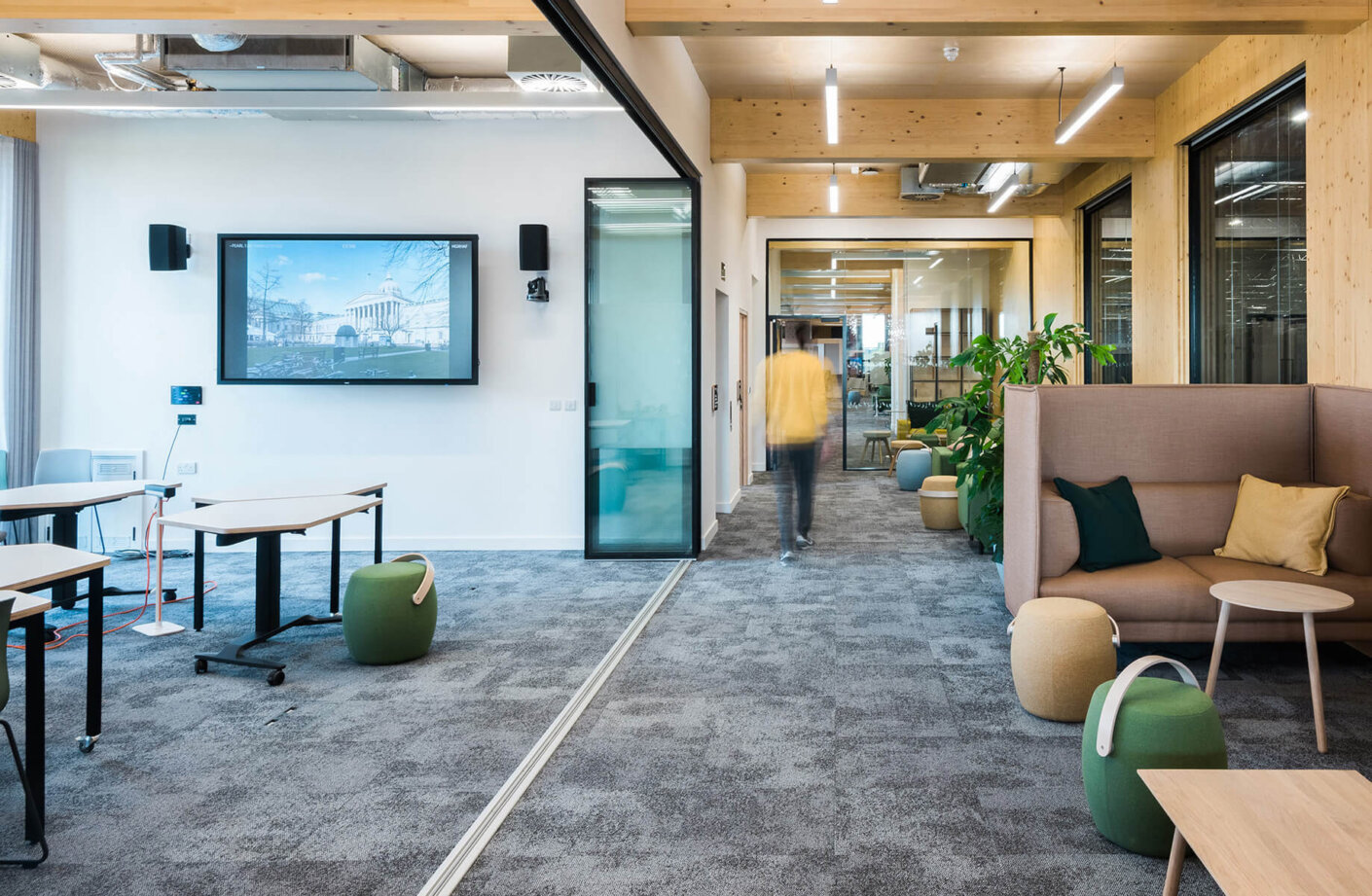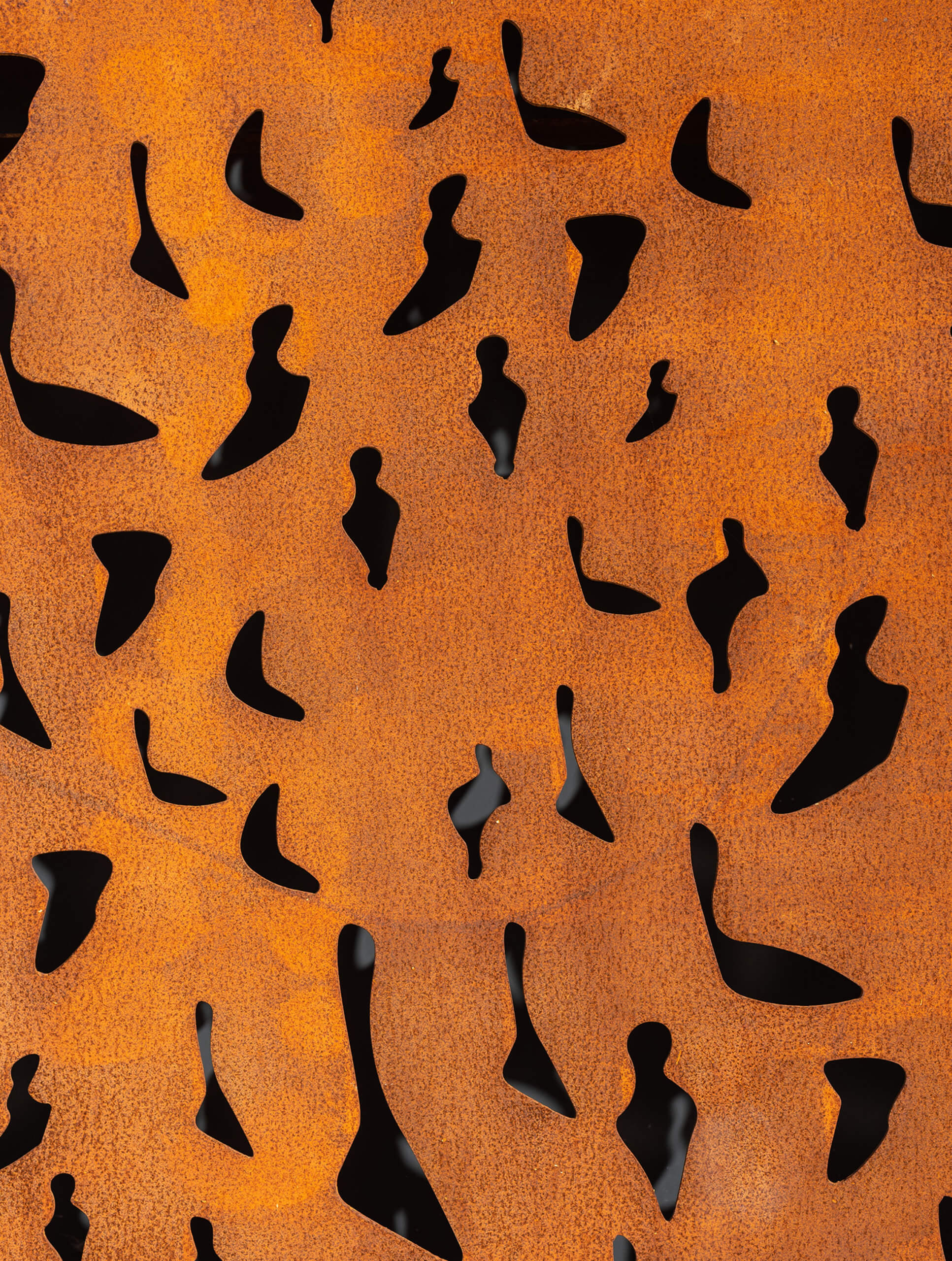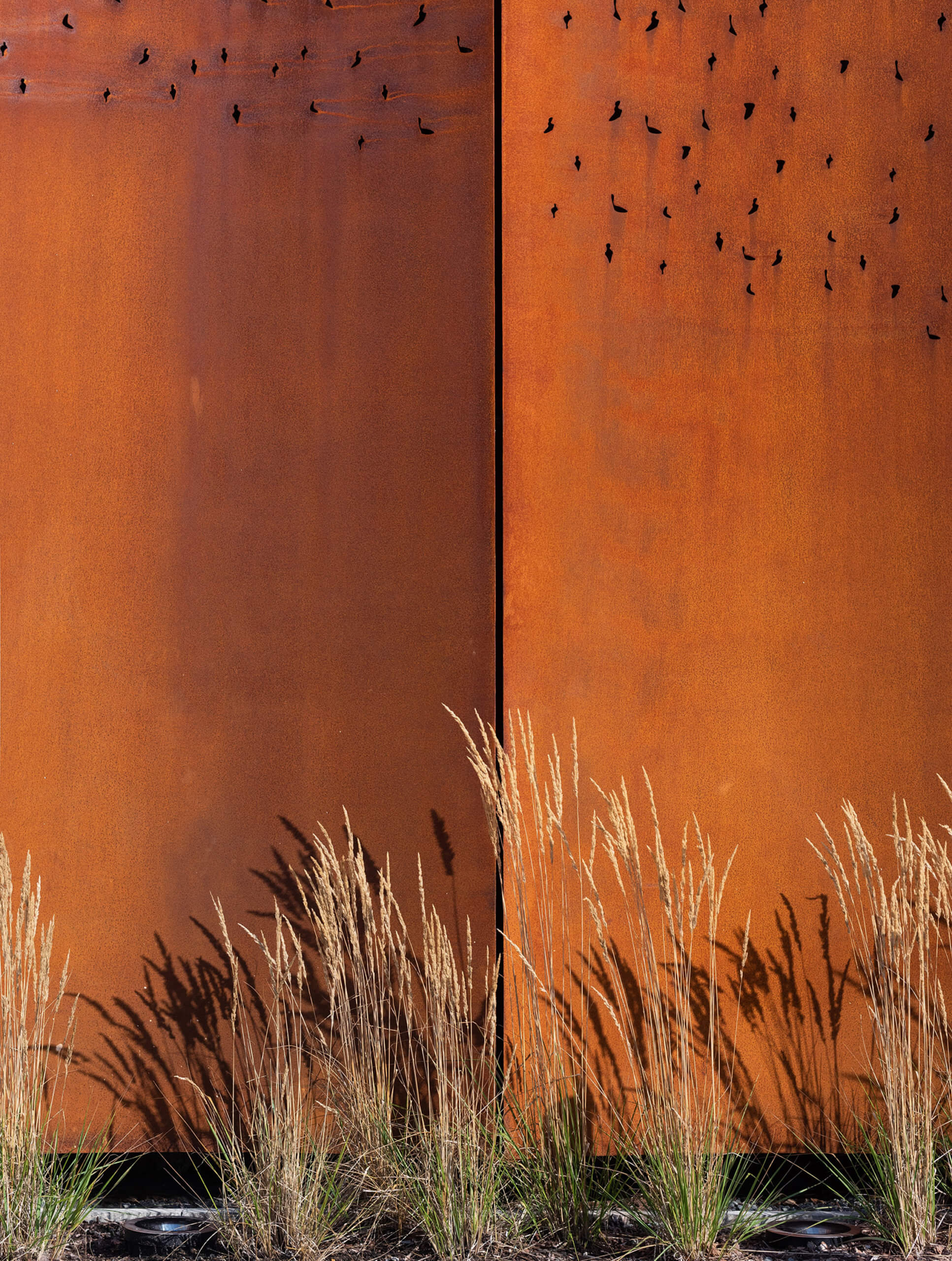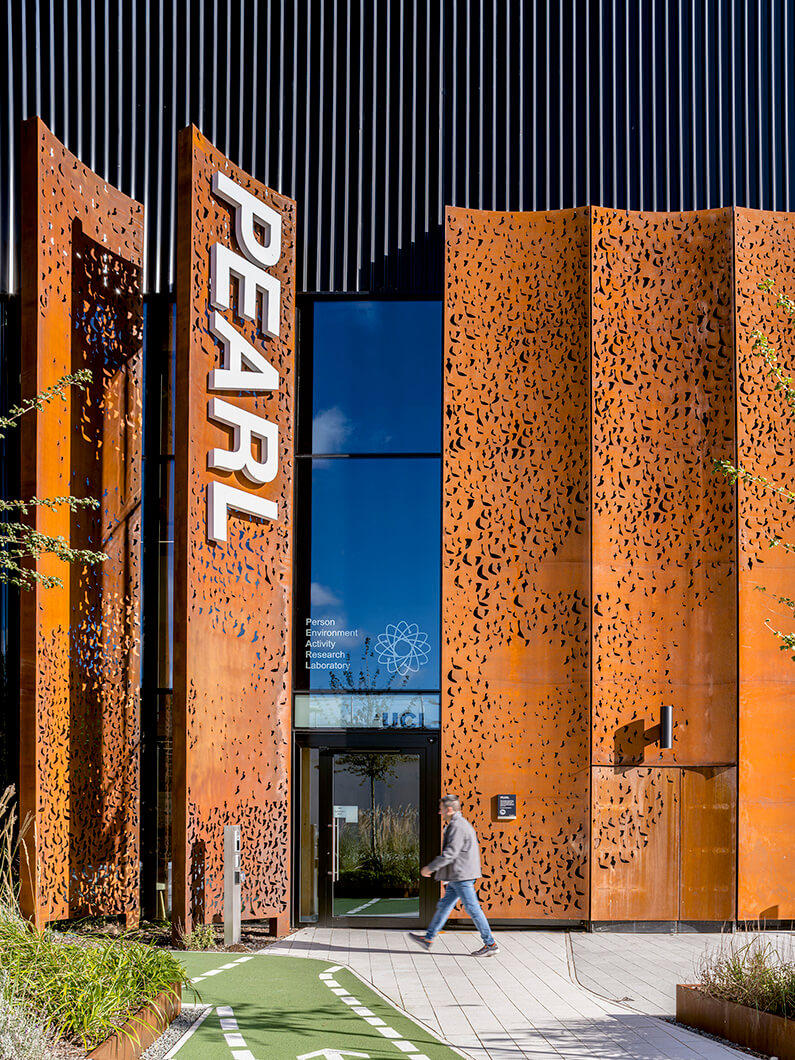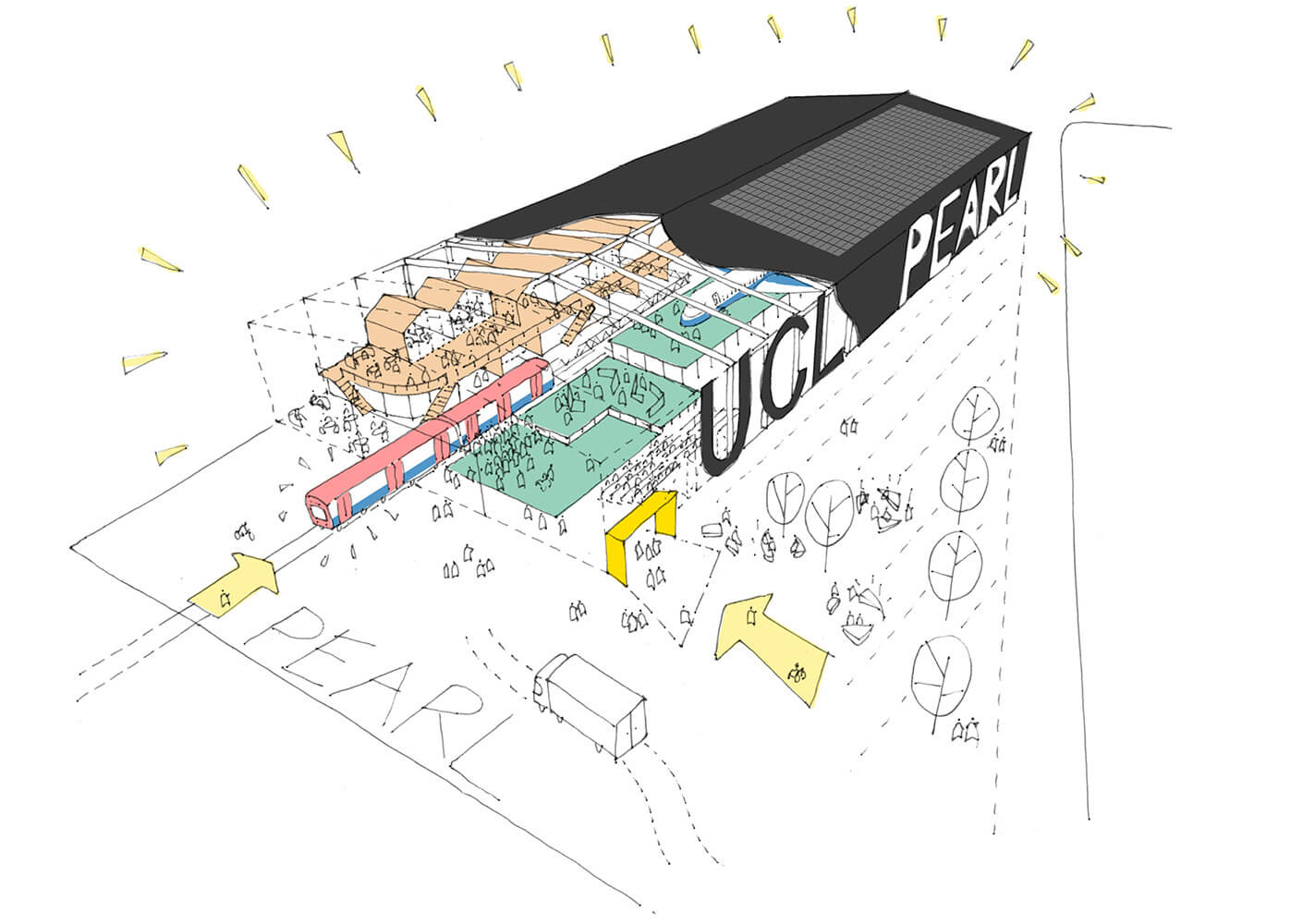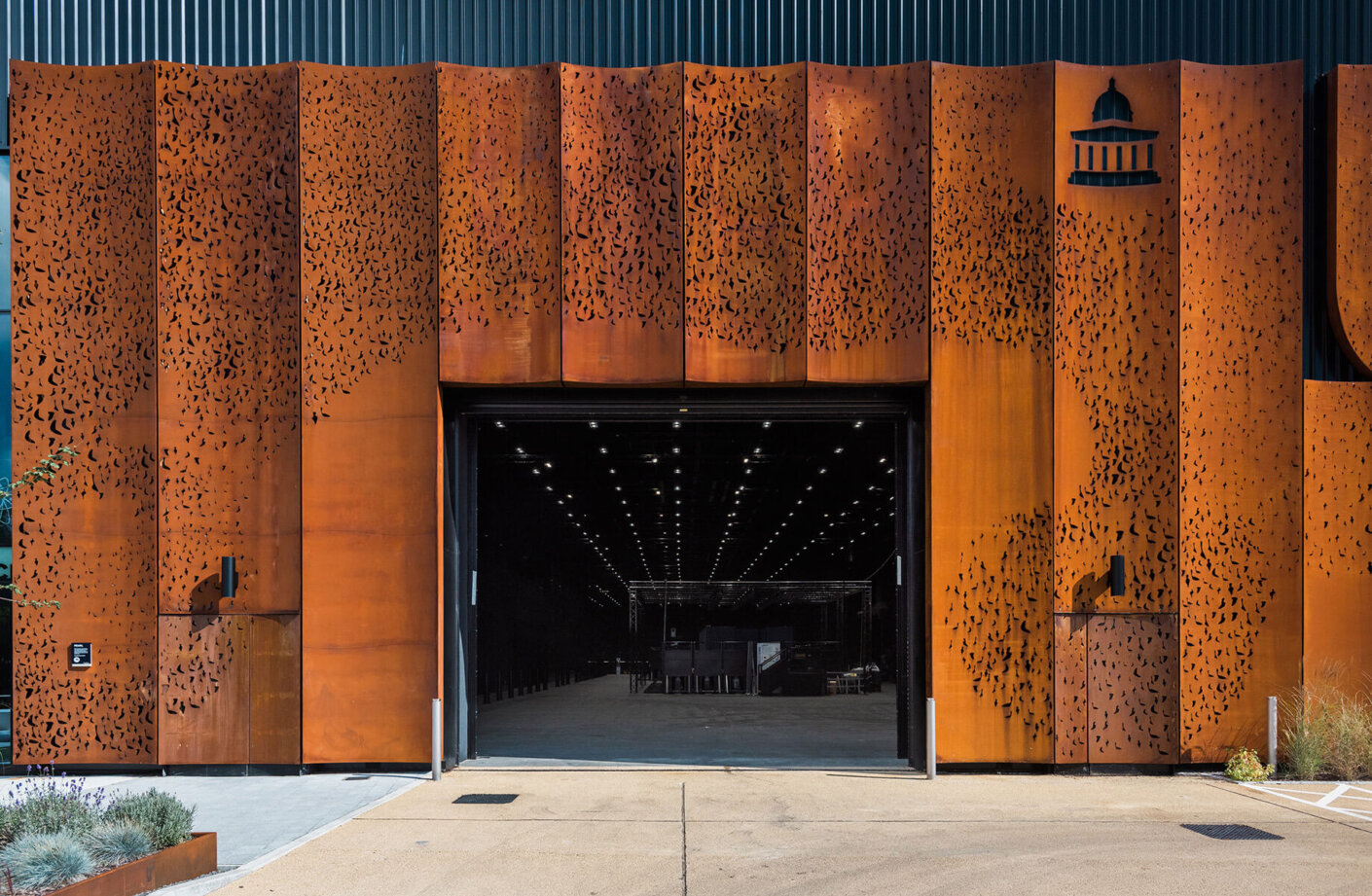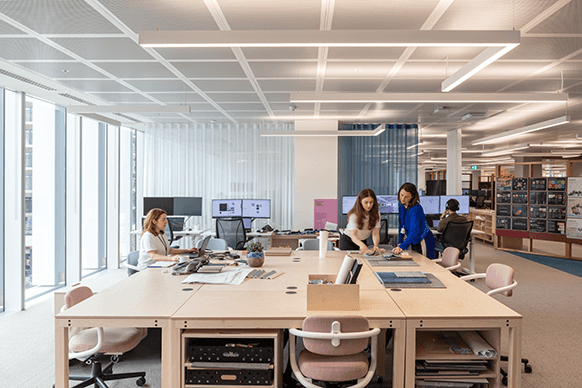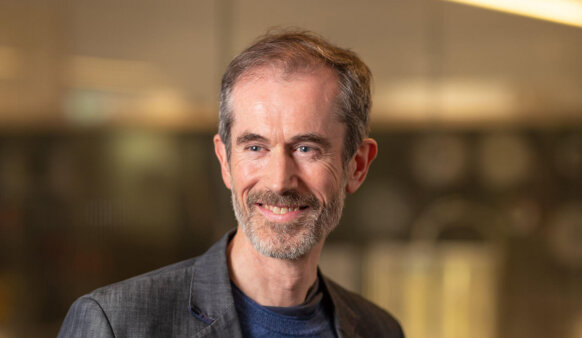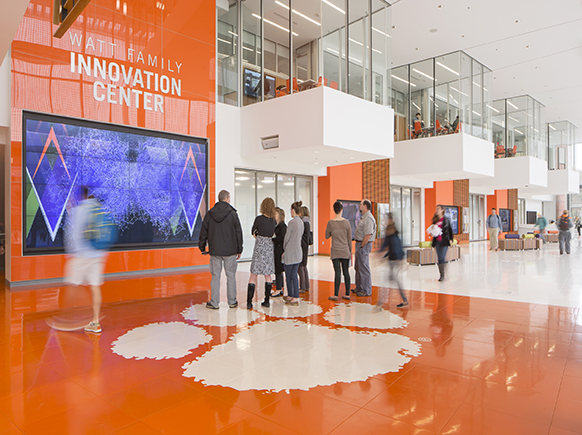London-based architecture practice Penoyre & Prasad, a studio of Perkins&Will, has completed University College of London’s (UCL) unique research laboratory, PEARL. The research centre’s goal is to improve the built environment and the way we interact with it. Life-sized environments—a railway station, high street, town square for example—will be built under controlled conditions to examine how people of all abilities interact with their urban environment and each other.
This highly collaborative project—bringing together engineers, architects, biologists, social scientists, neurologists, artists and public—is leading the way in designing for a more complex, integrated understanding of ourselves and our interactions with our environment.
